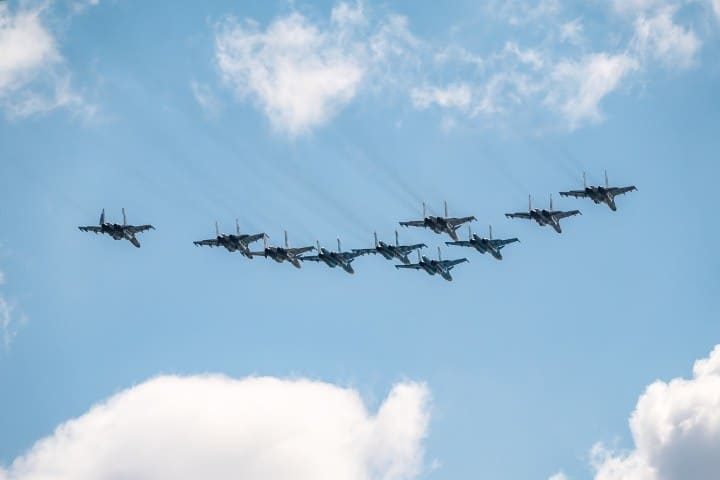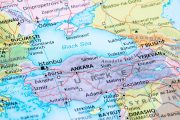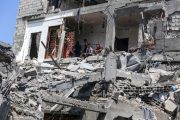
SINGAPORE — Japan and India started their first joint fighter-jet exercise on Monday near Tokyo, as the countries ramp up defense and security relations to counter China’s rising military ambitions. Although the drill was agreed to by the two countries during discussions between Japanese and Indian defense and foreign ministers in 2019, it had to be postponed due to the Covid-19 outbreak.
The first-ever joint air-combat training, termed Veer Guardian 2023, is slated to run 11 days, from January 16 to 26, at Hyakuri Air Base in Ibaraki Prefecture, northeast of Tokyo, and Iruma Air Base in Saitama Prefecture. The Japanese Air Self-Defense Force (JASDF) is participating with four F-2 and four F-15 fighters, while the Indian Air Force (IAF) is fielding four Su-30 MKI fighter jets, two C-17 transport planes, and one IL-78 tanker, together with a contingent of around 150 personnel.
“By conducting joint Japan-India fighter training, we aim to improve the tactical skills of the JASDF, promote mutual understanding between the Japanese and Indian air forces, and further deepen defense cooperation,” Izutsu Shunji, chief of staff of the JASDF, told a press conference at the Japanese Ministry of Defense in Tokyo on Jan. 12.
“Japan and India are in a special strategic global partnership relationship,” Izutsu said, stating that “holding the exercises represents the JASDF and the IAF have established a mature relationship already.” “India is a like-minded country, and the JASDF aims to deepen defense cooperation with such country’s air force,” he pointed out.
Addressing reporters at Hyakuri Air Base on Jan. 10, Group Captain Rohit Kapil of the IAF, who will lead the training, added that the drill will enhance the long bonds of friendship and boost defense cooperation, reflecting another step in bilateral strategic ties between India and Japan.
Both countries comprise half of the alliance of four large democracies known as the Quadrilateral Security Dialogue (Quad). The multilateral initiative, which also encompasses the United States and Australia, was set up purportedly to maintain a free and open Indo-Pacific and counter China’s rising military clout in the contested South and East China Seas.
Should Beijing invade Taiwan or the Japan-controlled but China-claimed Senkaku/Diaoyu Islands in the East China Sea, it would want to focus its fighter planes in the area around Taiwan and Japan. With bilateral cooperation between Japan and India, China will be prompted to be concerned about its border with India. Also, if China were to invade India, it would be worried about Japan.
The first-ever bilateral fighter joint drill will also provide precious opportunities to the JASDF from a military perspective. The Sukhoi Su-30MKI was originally developed by Russia’s Sukhoi and constructed under license by India’s Hindustan Aeronautics Limited (HAL) for the IAF, and the drill is a chance for the JASDF to undergo air combat training with the Russian-origin aircraft.
It is noteworthy that China’s J-16 fighter jet is also an overhauled version of Russia’s Sukhoi Su-30. With the JASDF increasingly being busy scrambling its fighter aircraft in wake of Chinese military aircraft activities in Japan’s airspace in recent years, the drill with the IAF could boost the JASDF’s tactical skills to cope with Chinese aircraft.
Izutsu also mentioned that both the JASDF and the IAF, among 17 nations in total, were involved in the Royal Australian Air Force (RAAF)-hosted multinational exercise known as Pitch Black 2022, conducted over the span of three weeks in August and September 2022.
Tokyo has conducted a series of joint military exercises in recent months, as well as revamping its defense and security strategy and explicitly stating its concerns about China.
In December, Prime Minister Fumio Kishida’s government decided to double defense spending to two percent of gross domestic product (GDP) by 2027. The largest military buildup that the country has seen since World War II entails a US$320 billion plan to purchase missiles capable of striking China and prepare for long conflict, as regional tensions provoke war concerns. Kishida labeled China as the “greatest strategic challenge ever” to Japan’s security. The Ministry of Defense also revealed a plan to develop multiple long-range missiles with a range of up to about 3,000 km for deployment in the 2030s, Kyodo News reported.
In addition to agreeing to expand its mutual defense treaty with Washington against space attacks, Japan earlier signed a new defense agreement with Britain.
In light of Japan’s increasing militarization, former Russian President Dmitry Medvedev lambasted Kishida for shameful subservience to the U.S. and provocatively stated that he should ritually disembowel himself, in a response to a recent meeting between Kishida and U.S. President Joe Biden. Once hailed as a Western-leaning reformer, Medvedev has rebranded himself as a staunch supporter of Russian actions in Ukraine since last year.
Kishida and Biden published a joint statement saying: “We state unequivocally that any use of a nuclear weapon by Russia in Ukraine would be an act of hostility against humanity and unjustifiable in any way.”
Medvedev said the nuclear statement displayed “paranoia” toward Russia and “betrayed the memory of hundreds of thousands of Japanese who were burned in the nuclear fire of Hiroshima and Nagasaki” — an allusion to the atomic bombs that the U.S. dropped on Japan to force its surrender at the end of the Second World War.



